Pet tech: inside the strange and wacky world of animal wearables
The aloof tech world thinks having a dog is boring and needs to be gamified
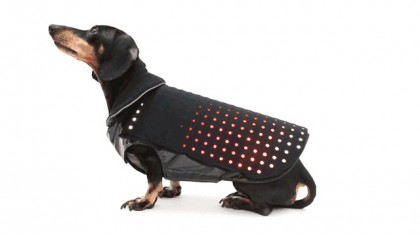
No hats for cats here
In the olden days, wearables for animals went no further than putting a pair of sunglasses on a sleepy dog. Some people even put coats on their pets too, to protect them from rain and show they inherited a sizeable fortune and may now afford life's quirky luxuries, but that was it.
Things have changed now. The pets of fashionable folk may now be adorned with as much spurious technology as their owners because, incredibly, wearables for animals have become a fairly large thing.
There's a wide choice available already, offering properly useful things like GPS tracking of rogue pets gone 'Littlest Hobo', vaguely interesting things like onboard cameras to share in their days, and really bizarre features like virtual fences that blast your dog's ears with a high frequency scream should it walk over a border set through an app.
There are numerous other things in development that want to offer yet more interactivity to the owning-an-animal world, thanks to the crazy world of Kickstarter. They may solve the age-old problem of a pet getting lost, but imagine the sense of guilt you'd feel were your modern pet to get mugged for its valuable hardware instead.
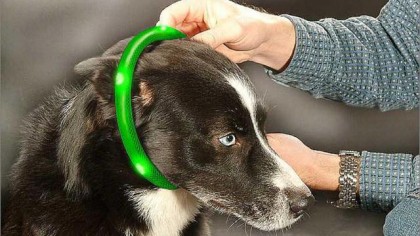
Leuchtie Plus LED Light Dog Collar
This LED Light Dog Collar isn't any old canine neck garment someone's had a few thousand of knocked out by a factory - it's a "100% waterproof German-engineered LED dog collar" according to the maker, with attached benefits such as letting your dog see in the dark.
Although dogs can already see in the dark quite well, can't they? When did you last see a dog squint?
Madness. But this is only the tip of the pet wearable iceberg.

Fitbark
If a human sleep tracker isn't enough of a novelty, how about one for your dog? That's the insane boast of FitBark, which thinks we should approach pets themselves as mini fitness gadgets.
After all, nothing motivates a person to go out for a walk in the rain more than the threat of having to clean up poo or sick, does it?
The claims of FitBark are that it monitors a pet's activity so you can work out how much to feed it, as if the planet is full of obese or skinny dogs. It also hands out "BarkPoints" so you know if you're being a good pet parent or not.
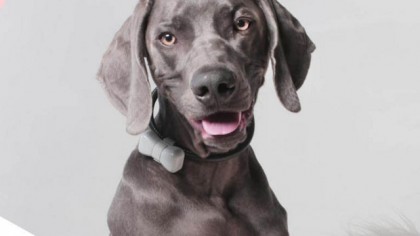
Wonderwoof
Slightly more peculiar is the WonderWoof. It's similar to FitBark only shaped like a bow tie to humiliate the wearer. This sort of ruins the core concept of having a pet in the first place by "gamifying" the experience, pairing with an app to award the owner with virtual bones and badges for doing the walking and feeding basics.
Probably best for people to motivate people who got a pet they didn't ask for for Christmas and who'd rather be looking at their mobile than the hairy behind of an animal.
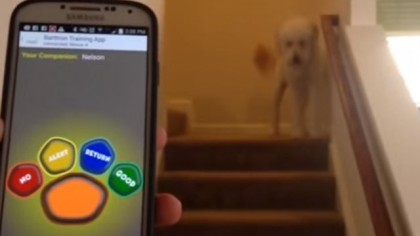
Chord
Purporting to offer yet more beast and wearable interaction is the Chord Collar. The prototype video shows a human/dog interaction entirely led by app prompts and collar prompts - making a dog entirely remote controlled.
The tool is only at Kickstarter stage at the moment, so only those that want their dog to be a curve-leading tech guru should get in now.
We asked Jared Marmen from Chord why pets need tech at all, and it turns out that, just like us, pets get bored too.
"We are busy working on ways to give our pets physically and mentally challenging jobs to do around the home when they are left alone," Marmen said, suggesting the new generation of bored, semi-abandoned "latchkey pets" are missing out on life while their owners are out partying.
"We can use wearable technology to make all pets working animals, which will improve their wellbeing while making the lives of pet owners better," he adds, pointing to a future in which trained dogs offer us tea and toast when we get home. Perhaps.

Disco Dog
For something a bit more fun, there's this. While you can debate the usefulness of GPS tracking, there's no denying the life-changing potential of the Disco Dog LED vest. Not just an walking billboard, but one controlled via smartphone. Your dog will be the life and soul of all the dog parties.
Better still, it's also an emergency wearable, displaying the text "LOST DOG" on its light pixel display should it stray out of range. Hopefully human versions will follow, once it's been safely animal tested.
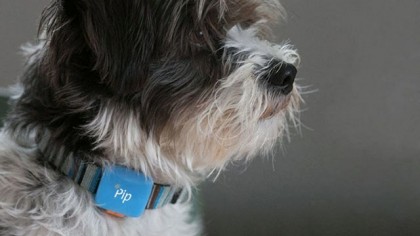
Pip
"Shortly after adopting our 15-pound terrier mix, Pip, he escaped through the fence to chase after a squirrel" is the tear-jerking beginning of the pitch for Pip, a successfully crowd-funded pet tracker that raised $74k through Kickstarter.
It's a hardware and app combo that promises to end the fear of having an animal disappear on you, one smaller than the rest for better pet comfort, durability and longer uptime.
Pip also tells the story of a lost cat with a dislocated knee. A story that, had the cat been wearing Pip with its three hour battery life, GPS, mobile data connection and inbuilt ability to stay in low power mode when near its designated wearer's home, could've turned out happier, which seems a bit guilt-inducing.
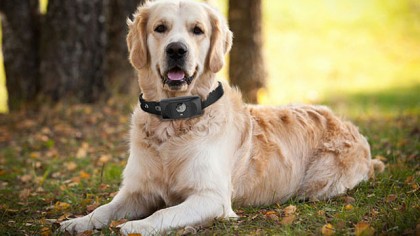
Motorola Scout 5000
The Motorola Scout 5000 is one of the more 'proper' wearables in this list, packing in much more than the bare bones Pip.
It also has GPS, so you can track down a rogue, disobedient pet, catch it, then tell it it's been a bad boy. But it's also augmented by an on-board camera for backing up the bad boy claims with photographic evidence.
It'll really know it's been bad when confronted with the damning PowerPoint presentation you've put together from its daily actions.
The craziest feature is a push-to-talk option, for chatting with - or simply really confusing - your pet from afar.
And if you're intrigued enough to buy it, you'd probably be interested enough to sign up for a paid ($14.99, £10, $AUD20) monthly subscription to its "geo fence" service, a tool that messages the owner when the beast strays past a virtual boundary set via a control app that the poor animal won't know a thing about.
Again, we asked Chord's Marmen if dogs really can be controlled by a vibrating collar that responds to invisible fences, as it sounds a bit mad when put like that.
"Absolutely!" he said. "Most people have some familiarity with the traditional invisible shock fence, so creating an 'invisible' boundary using negative reinforcement is not too hard for pet owners to grasp."
Although he points out that using such negative reinforcement can cause distress in the pets, so tools that use positive learning methods and encouragement rather than threat are preferred.
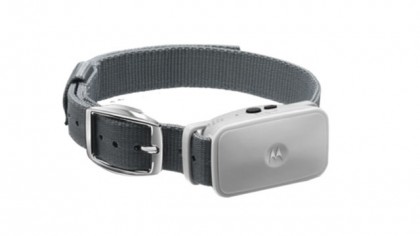
Motorola Bark 200U
Or the Woof-Away as it clearly should have been called. Mobile giant Motorola also makes several lower tech anti-bark collars than the previous Scout, but they're not exactly fun for the dog as, like the 200U, they vibrate and send ultrasound screams whenever it makes too much of a noise.
It's like giving your dog an ASBO, one that attempts to train the dog to be quiet by emitting jarring alerts only it can hear when the sensor picks up too much barking coming out of its mouth. It's negative reinforcement, mind, which means you'll need a clear understanding of whether you want to use this kind of tech on your pooch.
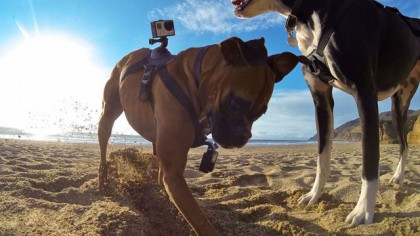
GoPro Fetch
Buyable right now is the GoPro Fetch. You can seriously infringe your pet's privacy by watching everything it does, through its eyes but a bit higher up, at whatever resolution and frame rate your GoPro can handle.
It might be fun at first, while you're watching it running around and playing in 1080p, but what happens when it approaches another dog and puts its nose right up its…
And you've also got to question your life choices when you've forced the family to sit down for a two hour showing of 'Beef and Me: Our Walk In The Park Today'.
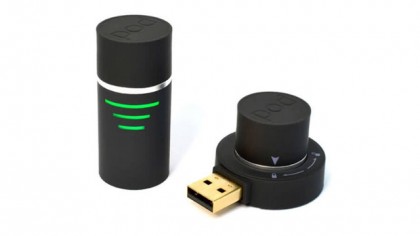
Pod
The maker of Pod 2 is oblivious to the privacy concerns of your pet, claiming its small capsule-like tracker lets you "record up to 8 hours of your pet's secret life" via GPS, with the accompanying app overlaying Woofles' journey on a map.
It also tracks activity level of your surveilled pet. The fact that pets' activity levels vary by breed, weather and owner's current lethargy levels means we can't help but wonder what the use of dog/cat activity data is.
Chord's Marmen said that the data can give info on the differences between your pets: "Those differences go well beyond generalising breeds. We know that two different pups from the same litter can have very different personalities."
He added that this could make training more tailored, and therefore pleasant, for your pet: "We are aiming to adapt initial and maintenance training to the pet. There is a broad spectrum."
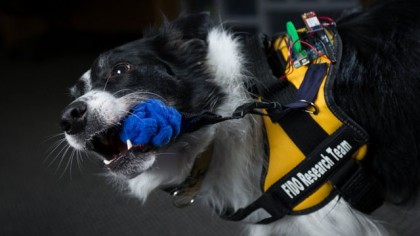
FIDO
FIDO is no novelty product for the rich. The acronym stands for "facilitating interactions for dogs with occupations," a fancy way of saying it's a concept wearable that would allow helper dogs to better communicate with their owners.
It's a really exciting idea, with the maker showing off a demo where a trained pet could be taught to issue audio prompts to help it, yes, talk to the person it's helping. That might be a policeman ("I SMELL DRUGS ON THIS ONE, BOOK HIM") or a blind person ("BUS, RIGHT, EVASIVE ACTION").
A standalone wearable incarnation could let a rescue dog go off hunting alone and radio back to base when it finds something, with the ultimate dream for the consumer being a system that lets a pet say when it's hungry. You'd probably turn those alerts off after a day, though, given you'd hear nothing else.

Dogstar Trail Tracker
The DogStar Tail Tracker claims to already have an idea of what your dog might be thinking, thanks to mapping its tail movements. Given that we all sort of know that 'wagging = happy' it's quite a tough thing to sell.
The maker says it's all about knowing "how it's wagging" rather than just if it's wagging, and that some "canine neuroscience" is involved, depending on the 'direction' of the tail wags.
We suspect a random number generator might just be choosing between happy, sad, sleepy and hungry, but it's not out yet so we'd best not be too cynical.
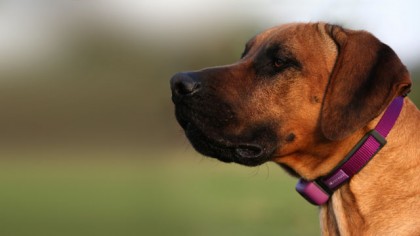
Pet Pace
Another so-called health tracker, Pet Pace is a medical collar that claims it can let you know if your animal's off colour; by tracking its temperature, pulse and activity level to tell its carer, perhaps, when it's not well, or at least when something's different.
It even goes so far as to suggest it "improves clinical outcome" for the animals it's attached to, potentially reducing vet bills by... encouraging you to take it to a vet more.
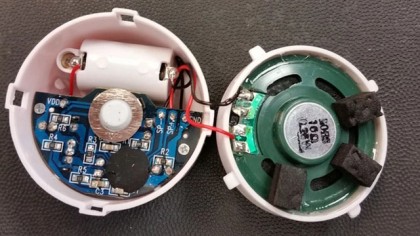
Cat Speak
Sadly, some pet wearables are in fantasy land. One Kickstarter punt is Cat Speak, a device that claims, once $100k has been pledged, it'll be able to translate meows into English.
Which is pointless, as the only thing cats say is "I actually really hate you," so that bundle of electronics could be doing anything. And it's only $249 into its funding round, making it a real-world equivalent of a Christmas cracker joke - but you can't look at animal wearables without SOMETHING that promises to translate pet-talk, right?